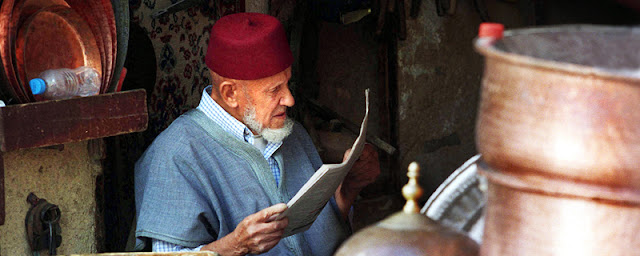14th International Festival of Amazigh Culture at Fès called to strengthen the values of social justice and freedom
The curtain fell last Sunday on the fourteenth edition of the International Festival of Amazigh Culture in Fez. Organized under the High Patronage of His Majesty King Mohammed VI by the Association Fes Saiss and the Center South North in partnership with the Region Fes-Meknes, this edition was marked by the vibrant homage paid to the great writer Tahar Ben Jelloun and by a series of tributes to several figures of the Amazigh song.
During the debates, which brought together 30 speakers included Moulay Driss Alaoui Mdaghri, Mohamed Kabbaj, Nouzha Skalli, Hassan Aourid, Fatima Sadiqi, Jean-Marie Cimon, Juliane Tauchnitz ... the speakers emphasised the impact of multiculturalism in general and Amazigh culture in particular on modernity, democracy and sustainable development. "This congress shed light on the contribution of minority culture to the Islamic world and called for multiculturalism to be a lever for economic, social and cultural development," says Moha Ennaji, director of the festival. And to add that the congress has examined ways to promote democratic culture in the countries of North Africa. During the debates, Participants noted the important role of Amazigh intangible heritage and cultural diversity and their contributions to the culture of peace. Unanimous, academics like Mohamed Arji (University of Fes), Abdallah Boumalek (IRCAM), Abdelouahad Mabrour (University of El Jadida), Ali Fertahi (Mly Slimane University), Mohamed Chtatou (International University of Rabat) and Driss Bouyahya (University Moulay Ismail, Meknes), reviewed the evolution over the years of Amazigh cultural action and its different phases of transformation.
A dozen concerts at the historical site of Bab Makina set the tone for a colourful event! The varied programming attracted lovers of Amazigh and popular music.
 |
| Dounia Batma |
The International Forum, another strong aspect of the festival, it was a platform to discuss the Amazigh culture and the future of democracy in North Africa. The discussions focused on the importance of democratic culture and intercultural dialogue for human development, peace and social cohesion.
In parallel, theater, writing, and painting workshops, as well as poetry readings, art and book exhibitions and Amazigh carpet exhibitions were on the program.
Tahar Ben Jelloun, "the man of the year"
During the festival, the organizers paid a warm tribute to the writer Tahar Ben Jelloun. Born in Fez, the winner of the Goncourt prize (in 1987 for "La Nuit Sacrée") was chosen "man of the year" by the Amazigh festival. In a testimony, Mohamed Kabbaj, founder of the Association Fes-Saïss, returned on the paths crossed with Ben Jelloun. "Although we are both native of the medina of Fez, a few hundred meters, I have known you through your writings, novels, and articles," Kabbaj said. Prix Goncourt in 1987 for "La nuit sacrée" (translated into 43 languages), Tahar Ben Jelloun is the glory of Moroccan writing: Arabization made him leave his post of teacher of philosophy in 1971, but opened him an international career. He is the most translated French writer in the world. He is the author of fifty books, poetry and novels. Writer elected member of the academy Goncourt (since 2008), he is the author of many novels including "Harrouda", "The scars of the sun", "The reclusions solitary", "The prayer of the absent" ... until to "A country on the nerves" and "Punishment".
Among the big names, writers, poets, and journalists who participated in this festival: Driss Mdaghri Alaoui (Morocco), Nouzha Skalli, Hassan Aourid (Morocco), Jean-Marie Simon (France), Noha Bakr (Egypt), Johan Goud ( Holland), Tarik Mira (Algeria), Juliane Tauchnitz (Germany), Mino Vianello (Italy), Youssouf Amine Elalamy (Morocco) and many others!
In the end, the 14th edition of the festival released the following recommendations:
1) Emphasise the central role of the Amazigh language and culture as vectors of universal values of democratic culture and living together.
2) Strengthen respect for gender equality and the preservation of social integration.
3) Sensitize individuals, especially young people through education, to the values of democracy, modernity and peace.
4) Encourage democratic culture in the family, school, community and cities, at local and national levels.
5) Encourage self-criticism and critical thinking, and work on mentalities as a way to prevent conflict.
6) Separate religion from politics, and consolidate the separation of powers.
7) Strengthen the values of social justice and freedom, and strengthen cooperation among North African countries to achieve democracy and sustainable development.
SHARE THIS!


















































